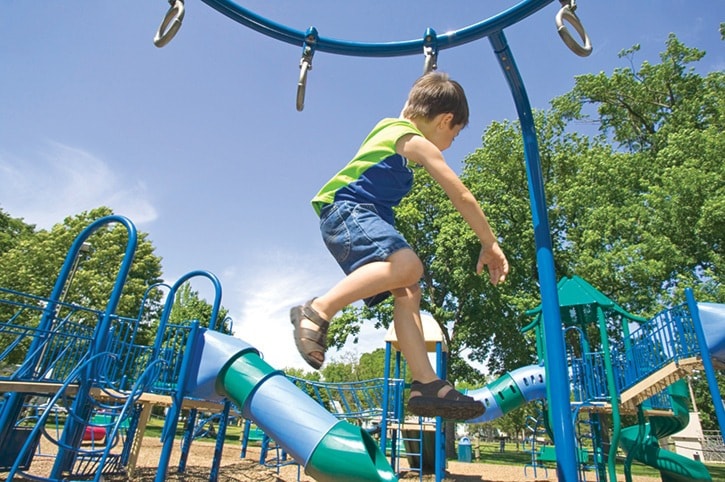A trend towards the so-called bubble-wrapping of children, or helicopter parenting, is giving way to the notion of the importance and benefits of introducing risk in childhood play.
Ulrich Mueller, a psychology professor at the University of Victoria, estimates the overprotection of children started in the 1980s and ’90s, when parents began to invest more in their children, but also became more afraid of harm.
Over the past 10 years, Mueller believes those attitudes have started to shift. Experts are starting to view playgrounds, which encourage imaginative play and appropriate risk taking, as a helpful aid to developing motor skills and confidence.
“This is how children learn what they cannot do and can do, therefore they learn about their own competence,” Mueller said.
Mueller and Enid Elliot, an early learning and care instructor at Camosun College, are currently studying a nature kindergarten program based out of Sangster elementary in Colwood to see the effects of natural play.
As the study is ongoing there are no results yet, but the researchers are looking at motor development, fitness levels, attention spans and emotional development in the cohorts of tots.
Elliot said the early results are positive towards incorporating risk into play.
“I’m convinced that children need to have some ways of practicing how to take risks and how to be safe,” Elliot said. “People have much more catastrophic injuries if they don’t learn from an early age to start to learn to manage their own risk.”
“You learn to fall down with your knees and your hands to protect yourself, that’s a learned skill,” said Michelle Tannock, a visiting professor with UVic’s centre for research in early childhood. “That gives them a sense of the boundaries of what they can do and what they can’t do, versus expecting that others will protect them.”
Tannock agrees more talk is circulating about the role of risk in childhood development and she would like to see this idea influence educational programs and play areas and structures.
Victoria playground equipment dealer Merv Walker said the call for alternative playgrounds is growing, but he heeds caution. He believes the push for risk creates a grey area for complying with safety regulations for playgrounds established by the Canadian Standards Association (CSA).
He worries the rules are being ignored. He even noticed a potential infraction in the photo of a nature-based playground at Pearce Crescent in the Saanich News, with uneven logs next to a pathway.
“If a child falls off an icy log for instance, the end of a log, and hits the pathway, it’s not covered by CSA,” Walker said. “CSA is what we have. I may or may not agree with it. In some cases I think it goes too far, but that’s my personal feeling. Everything we do has to conform to CSA. It’s that simple.”
Saanich’s parks planning and design manager, Gary Durrah, said the decision for the Pearce Crescent playground was based more on space and cost than anything else. Safety can be a concern, Durrah said, but it is certainly addressed.
“We do our best to minimize the chance of injury. So we still have to put in proper safety surfacing,” Durrah said. “It’s a very difficult thing to regulate.”
What needs to kept in mind moving forward is the difference between risk and hazard.
Playgrounds actually have low fatality and injury rates, Mueller said, especially compared to other common occurrences such as riding in cars. The distinction is key.
“It doesn’t mean playgrounds should have some nails sticking out,” he said.
kwells@goldstreamgazette.com
